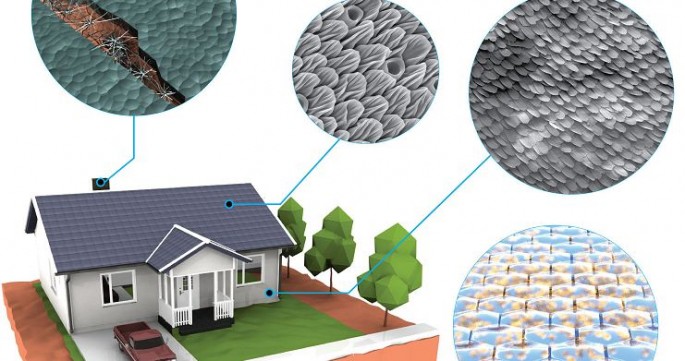The U.S. Defense Advanced Research Projects Agency (DARPA) has launched a program that will lead to technologies giving rise to "living building materials" capable of repairing themselves and adapting to the environment.
The goal of DARPA's "Engineered Living Materials" (ELM) program is to develop a new class of materials combining the structural properties of traditional building materials with attributes of living systems.
In a home, living materials can be a roof that breathes to control airflow; surfaces that don't flake or fade and a driveway that eats oil to clean up after spills.
"Living materials" is a new opportunity to take advantage of engineered biology to solve existing problems associated with the construction and maintenance of built environments. It will also create new capabilities to build smart infrastructure that dynamically responds to its surroundings.
"The vision of the ELM program is to grow materials on demand where they are needed," said Justin Gallivan, ELM program manager.
"Imagine that instead of shipping finished materials, we can ship precursors and rapidly grow them on site using local resources. And, since the materials will be alive, they will be able to respond to changes in their environment and heal themselves in response to damage."
Scientists are making progress with three-dimensional printing of living tissues and organs by using scaffolding materials that sustain the long-term growth of living cells. These cells are derived from existing natural tissues, however, and aren't engineered to perform synthetic functions. Current cell-printing methods are too expensive to produce building materials at necessary scales.
ELM looks to merge the best features of these existing technologies. It will build on them to create hybrid materials composed of non-living scaffolds that give structure to and support the long-term viability of engineered living cells.
DARPA intends to develop platform technologies that are scalable and can facilitate a quick transition from laboratory to commercial applications.
The long-term objective of the ELM program is to develop an ability to engineer structural properties directly into the genomes of biological systems so that neither scaffolds nor external development cues are needed for an organism to realize the desired shape and properties.
Achieving this goal will require significant breakthroughs in scientists' understanding of developmental pathways and how those pathways direct the three-dimensional development of multicellular systems.



























